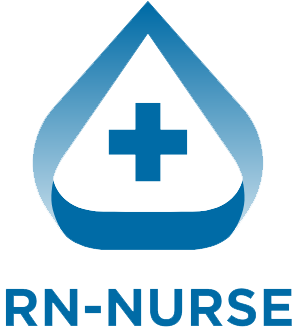One of the most important skills every nurse and registered nurse (RN nurse) must master is prioritization. On the NCLEX exam, this is tested through “What would you do first?” scenarios. These questions measure whether you can think critically, act quickly, and keep patients safe.
As a nursing student or new RN, learning to prioritize patient care is just as important as knowing lab values or medication side effects. That’s why prioritization is always included in nursing bundles and NCLEX prep resources.
This article breaks down the basics of prioritization and gives you practice scenarios to strengthen your skills.
Why Prioritization Matters for Nurses
In real life, a nurse may have four or five patients, each with different needs. Some may be stable, while others are in critical condition. Being able to decide who to see first or what intervention to perform first is a lifesaving skill.
On the NCLEX, prioritization questions test:
- ABCs: Airway, Breathing, Circulation
- Maslow’s Hierarchy of Needs (physiological needs before emotional needs)
- Safety before comfort
- Acute vs. chronic problems
- Stable vs. unstable patients
If you can apply these rules consistently, you’ll feel more confident on exam day and in your daily nursing practice.
The ABC Rule – Airway Always Comes First
The very first thing a nurse should assess in any situation is the airway. Without a clear airway, a patient cannot survive. Breathing comes next, then circulation.
✅ Example NCLEX Question:
- Who do you see first?
- A patient with 8/10 pain in the leg
- A patient with shortness of breath and O2 sat 82%
- A patient asking about discharge instructions
👉 Correct Answer: The patient with shortness of breath (Airway/Breathing issue).
Maslow’s Hierarchy – Physiological Before Emotional
As a registered nurse, your first duty is to meet basic survival needs: oxygen, fluids, nutrition, elimination, and safety. Psychological concerns matter but only after physiological stability.
✅ Example:
- An anxious patient vs. a patient with low blood pressure after surgery → You stabilize blood pressure first.
Stable vs. Unstable – A Core NCLEX Strategy
On the NCLEX, unstable patients always take priority over stable ones.
✅ Example:
- Who comes first?
- A diabetic patient asking for a snack
- A post-op patient with new chest pain
- A patient with a healing wound
👉 Correct Answer: The post-op patient with chest pain (unstable).
NCLEX Practice Scenarios
Here are some prioritization practice cases that mirror what you’ll see on the exam:
Scenario 1:
You’re an RN nurse caring for four patients:
- A COPD patient with O2 sat 82%
- A diabetic patient requesting food before insulin
- A post-op patient complaining of pain (7/10)
- A patient scheduled for discharge teaching
👉 First action: See the COPD patient (low O2 = unstable).
Scenario 2:
You are in the emergency department. Who gets priority?
- Child with asthma, wheezing and labored breathing
- Adult with a leg cast asking for pain meds
- Elderly patient with mild fever
- Post-op patient asking about dressing changes
👉 First action: Child with asthma (airway/breathing compromised).
Scenario 3:
Septic patient presents with fever, confusion, and hypotension. Which comes first?
- Administer antibiotics
- Collect blood cultures
- Start IV fluids
- Give antipyretics
👉 First action: Start IV fluids (stabilize circulation).
Tips for Answering “What Would You Do First?” Questions
- Think ABCs before pain or comfort.
- If multiple patients are involved, ask: Who is most unstable?
- Safety needs outweigh education, teaching, or emotional support.
- Remember acute > chronic: An acute asthma attack takes priority over stable COPD.
- Use practice from nursing bundles that focus on prioritization and critical thinking.
Final Thoughts
The NCLEX doesn’t just test facts—it tests how you think like a registered nurse. Prioritization practice is essential because in both the exam and real clinical settings, making the wrong choice could harm a patient.
By applying the ABCs, Maslow’s hierarchy, and stable vs. unstable rules, you’ll be ready for the NCLEX “What would you do first?” scenarios. With consistent practice, you’ll improve both your exam performance and your real-world nursing care.
Whether you’re using a nursing bundle or practicing with RN peers, keep sharpening your prioritization skills—because they truly save lives.

